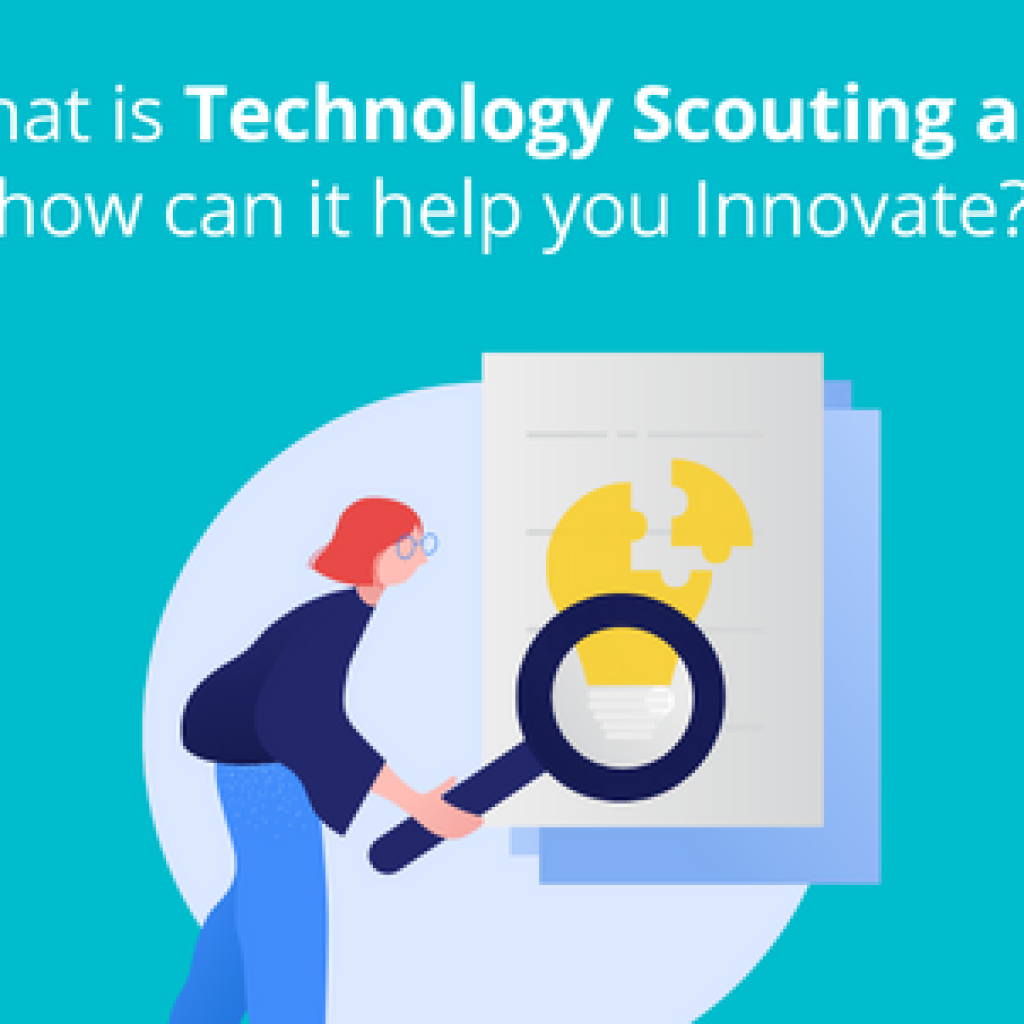The term “open innovation” was coined by University of California Berkeley professor Henry Chesbrough in his 2003 book Open Innovation: The New Imperative for Creating and Profiting from Technology.
However, there is evidence of open innovation practices in the 20th century.
For example, Bell Labs, AT&T’s R&D subsidiary, is known for its extensive collaboration with universities and the U.S. government during the 20th century. This collaboration led to significant technological advancements, including the development of the transistor, the laser, and the UNIX operating system.
Open Innovation is mainstream today, so much so that it’s become necessary for survival and growth, especially in highly competitive industries.
It has emerged as a pivotal strategy that enables corporations with research and development (R&D) departments, such as Pepsi, Coca-Cola, and Nestlé, to stay ahead of the competition.
Furthermore, a survey by The Economist indicates a significant shift away from traditional innovation practices, with 95% of respondents stating that their organizations engage in open innovation (OI) for at least some projects. This trend is further evidenced by hiring patterns within the industry.
An increasing number of executives at prominent global companies, such as Nestlé, Samsung, and BMW, now hold titles like “open innovation manager,” reflecting the growing importance of OI in their strategic approaches. Each company uses different open innovation practices.
This article explores the concept of open innovation and its types, benefits, challenges, and success stories so that readers can understand and implement it in their innovation strategy.
What is Open Innovation?
Open innovation is a strategic approach that involves actively seeking and integrating external ideas, knowledge, and resources into a company’s innovation processes.
Companies engage with external partners, such as other companies, startups, research institutions, or customers, to co-create and develop new products, services, technologies, or business models instead of relying solely on internal research and development efforts.

Open innovation recognizes that valuable ideas and expertise exist outside a company’s boundaries and that collaboration with external entities can accelerate innovation and lead to more successful outcomes. It involves various practices, such as open-sourcing, collaborative research and development, technology licensing, joint ventures, and crowdsourcing, to tap into a broader ecosystem’s collective intelligence and capabilities.
Open innovation is about being open to external contributions and actively leveraging external networks to drive innovation and gain a competitive edge in the market. It’s a strategic approach that recognizes the value of collaboration and knowledge sharing in pursuing innovation and business growth.
Open Innovation is a paradigm that asserts that firms can and should use external and internal ideas and internal and external paths to market as they look to advance their technology. This concept, introduced by Henry Chesbrough in 2003, marks a shift from the traditional closed innovation model, where R&D was tightly controlled and secretive.
Types of Open Innovation
Open innovation can take various forms, and here are some of the different types of open innovation, along with examples:
Outside-In Innovation
Crowdsourcing: Companies solicit ideas, solutions, or feedback from a large group of external contributors, often through online platforms. For example, LEGO’s “LEGO Ideas” platform allows fans to submit their own LEGO set ideas for potential production.
Open competitions: Organizations organize contests or challenges to encourage external innovators to solve specific problems. XPRIZE Foundation offers prizes for technological advancements, such as the Google Lunar XPRIZE for landing a rover on the moon.
Inside-Out Innovation
Technology Licensing: Companies allow other organizations to use their patented technologies in exchange for licensing fees or royalties. For instance, Qualcomm licenses its mobile technology to other manufacturers.
Spin-offs and spin-outs: Organizations create new, independent entities to commercialize and develop certain technologies or business units. For example, Alphabet Inc.’s Waymo, which focuses on autonomous vehicles, originated as a project within Google.
Collaborative Innovation
Strategic Alliances: Companies form partnerships with other firms to jointly develop new products, share resources, or enter new markets. An example is the partnership between Apple and IBM to develop enterprise-focused iOS apps.
Joint Ventures: Two or more companies establish separate entities to work together on a specific project or business venture. For instance, Sony Ericsson was a joint venture between Sony and Ericsson that manufactured mobile phones.
Inbound and Outbound Innovation
Inbound Open Innovation: Companies actively scout for external technologies, ideas, and innovations to incorporate into their products or processes. Pharmaceutical companies often collaborate with smaller biotech firms to access promising drug candidates.
Outbound open innovation is when organizations seek to monetize or leverage their internal innovations by licensing or selling them to external partners. For example, Microsoft licenses its Windows operating system to computer manufacturers.
Innovation Ecosystems
Innovation Hubs and Incubators: Companies establish or partner with innovation hubs, incubators, or accelerators to nurture startups and early-stage ventures. BMW’s Startup Garage, for instance, supports automotive technology startups.
Clusters and Industry Networks: Organizations participate in regional or industry-specific innovation clusters and networks to exchange ideas, collaborate, and access shared resources. Silicon Valley is a prime example of a technology innovation cluster.
These are just some of the many ways that open innovation can manifest, and they can be adapted to suit the specific needs and goals of different industries and organizations. Open innovation strategies can help companies tap into external expertise, reduce development costs, accelerate time-to-market, and stay competitive in today’s rapidly evolving business landscape.
Implementmentation of Open Innovation
Open innovation strategies can significantly enhance business performance, particularly in sectors characterized by rapid technological advancement. For instance, universities and research institutions play a critical role in fostering open innovation through technology transfer, which can lead to sustainable development and competitive advantages in high-tech industries (Vac & Fiţiu, 2017).
Moreover, integrating digital technologies into open innovation processes has been shown to facilitate collaboration and enhance the effectiveness of innovation activities (Urbinati et al., 2018). This is particularly relevant as organizations increasingly rely on digital platforms to engage with external partners and stakeholders.
However, the adoption of open innovation strategies is not without challenges. Organizations must navigate various managerial and cultural hurdles, including organizational change management and aligning internal processes with open innovation practices (Ibarra et al., 2015; Sieg et al., 2010).
The transition to open innovation can be particularly daunting for small and medium-sized enterprises (SMEs) due to resource constraints and limited access to external networks. Nevertheless, SMEs engaging in open innovation can experience significant benefits, including enhanced innovation performance and improved competitive positioning (Baierle et al., 2020).
Furthermore, the interplay between open innovation and strategic innovation is critical for organizations aiming to maintain a competitive edge. Research indicates that organizational learning ability and absorptive capacity are essential for effectively leveraging open innovation (Mirza et al., 2022). By fostering a culture of openness and collaboration, organizations can better adapt to market changes and societal challenges, ultimately leading to more sustainable and impactful innovation outcomes.
Despite its advantages, open innovation presents challenges, such as managing intellectual property, coordinating collaborations, and ensuring effective communication among partners. The potential pitfalls of open innovation include the risk of information leakage and the complexities of managing external relationships. Organizations must develop strategies to address these challenges to maximize the benefits of open innovation.
Numerous organizations have successfully implemented open innovation strategies. For example, Procter & Gamble’s Connect + Develop program exemplifies how a large corporation can leverage external partnerships to drive innovation. Similarly, research explores how startups can effectively organize and manage open innovation collaborations with larger companies, emphasizing the importance of selecting the right partners (Usman & Vanhaverbeke, 2017).
Organizations must adapt strategies to embrace open innovation as the innovation landscape evolves. This may involve developing new business models that facilitate collaboration, knowledge sharing, and fostering a culture that encourages experimentation and openness. Integrating open innovation practices can enhance an organization’s ability to respond to market changes and drive sustainable growth.
How does Open Innovation Impact Businesses?
Open innovation’s transformative effect on a business can help drive success in multiple areas.
1. Enhanced Product Development
Gaining access to external knowledge can lead to developing more innovative products that might not have been possible through internal efforts alone. With diverse perspectives, companies can create offerings that better meet market needs and stand out.
Further, by leveraging external contributions, businesses can reduce the risks associated with product development. Validated ideas and proven technologies from external sources can enhance the quality and relevance of new products, which could increase the likelihood of successful launches. The approach also enables faster development cycles, allowing companies to bring products to market more quickly.
2. Improved Market Adaptability
By collaborating with external entities, businesses can quickly incorporate new ideas and solutions that address emerging trends, customer preferences, and technological advancements. This adaptability is crucial in dynamic markets where the ability to pivot and innovate rapidly can determine a company’s success.
Companies engaged in open innovation are better positioned to anticipate and respond to shifts in market demand. Open Innovation enables them to stay ahead of competitors by continuously refining and improving their products based on external insight.
3. Strengthened Collaborations
Open innovation fosters more substantial relationships with various external partners, including research institutions, other companies, startups, and independent innovators. These collaborations go beyond single projects and often evolve into long-term partnerships that provide ongoing support and opportunities. Such networks can be invaluable for continuous innovation and lead to joint ventures, co-development projects, and shared intellectual property.
Collaborating with external partners allows businesses to leverage collective expertise beyond their internal capabilities. This collaborative approach can lead to groundbreaking innovations that benefit all parties involved. Strong relationships with external partners can also open doors to new markets, funding opportunities, and advanced research, further strengthening the company’s innovation ecosystem.
4. Corporate Growth
Open innovation enables companies to explore and enter new markets by developing products and solutions that cater to different customer segments or geographical regions. By incorporating external insights and technologies, businesses can tailor their offerings to meet the specific needs of new markets, driving expansion and revenue growth.
Engaging in open innovation allows companies to enhance their technological capabilities by integrating cutting-edge technologies and methodologies from external sources. This improves the company’s product portfolio and strengthens its overall innovation capacity. As a result, businesses that successfully implement open innovation often experience significant growth in market reach and technological leadership.
Success Stories in Open Innovation
Several global corporations have successfully implemented OI:
COVID-19 Vaccine Development: The rapid development of COVID-19 vaccines in 2020 was a remarkable example of open innovation. Pharmaceutical companies, research institutions, and governments collaborated closely to share data, research findings, and resources, leading to the development and distribution of multiple effective vaccines in record time. World Health Organization WHO, with partners, launched the Access to COVID-19 Tools (ACT) Accelerator to support the fastest, most coordinated, and perhaps the most successful global effort to develop tools to tackle COVID-19. (WHO, 2020)
Nestle Open Innovation Platform: Nestlé has launched open innovation platforms like “Henri@Nestlé” and the “Nestlé R+D Accelerator” to collaborate with startups, entrepreneurs, and innovators. These platforms invite external ideas and solutions for various challenges and opportunities in the food and beverage industry. (Nestle, Nestle R+D Accelerator)
NASA’s Open Innovation Initiatives: NASA has a long history of open innovation. To solve complex problems, it has run challenges and competitions like the “NASA Centennial Challenges. ” One notable example is the “Lunar Loo Challenge” in 2020, where it sought innovative designs for toilets to be used on the Moon. (NASA, 2)
Procter & Gamble’s Connect + Develop Program: Procter & Gamble (P&G) has a successful open innovation program called Connect + Develop. Through this program, P&G has partnered with external inventors and organizations to bring new products to market. One example is the Swiffer cleaning system, developed through collaboration with an external inventor. (P&G)
Example of how a company used Open Innovation for various benefits
One example of a company that has successfully used open innovation to drive business growth is Procter & Gamble (P&G) through its “Connect + Develop” program. P&G, a consumer goods giant, recognized the potential of open innovation to accelerate product development and enhance its portfolio. Here’s how they leveraged open innovation for business growth:
P&G’s Connect + Develop program was established to tap into external expertise and ideas. Here’s how it helped the company achieve business growth:
Cost Savings and Speed to Market: P&G recognized that they couldn’t solely rely on their internal R&D capabilities to innovate quickly enough. By actively seeking external innovations, they reduced the time and cost required to bring new products to market. This allowed them to stay ahead of competitors and respond faster to changing consumer preferences.
Diverse Product Portfolio: Through open innovation, P&G expanded its product portfolio by collaborating with external partners. For example, they partnered with a small startup to develop the Swiffer cleaning system, a product that became a massive success and opened up a new market segment for the company.
Access to Global Talent: P&G’s open innovation efforts enabled it to access a global talent pool and expertise. It partnered with inventors, entrepreneurs, and scientists worldwide, enriching its innovation capabilities and diversifying its product offerings.
Improved Consumer Insights: Collaborating with external partners provided P&G with valuable consumer insights and feedback. This allowed them to develop products that better met the needs and preferences of their target audience, enhancing customer satisfaction and loyalty.
Sustainability Initiatives: Open innovation also played a role in P&G’s sustainability efforts. They collaborated with external organizations to find eco-friendly packaging solutions and more sustainable product formulations, aligning with evolving consumer demands for environmentally conscious products.
Continuous Innovation: By embracing open innovation as a core strategy, P&G fostered a culture of continuous innovation. They consistently sought external input and ideas, ensuring they remained at the forefront of their industry and quickly adapted to market changes.
Market Leadership: P&G’s open innovation initiatives contributed to its market leadership in various consumer goods categories, including household cleaning, personal care, and baby care. They were able to introduce innovative products that gained significant market share.
Challenges in Implementing Open Innovation

The top five challenges that companies often face when implementing open innovation are:
Intellectual Property Concerns: Managing and protecting intellectual property while collaborating with external partners is a common and critical challenge in open innovation.
Cultural Resistance: Overcoming internal resistance to open innovation practices within the organization, including concerns about job security and sharing ideas, is a significant challenge.
Finding the Right Partners: It can be challenging to identify suitable external partners with the right skills and expertise who align with the company’s goals.
Integration of External Ideas: Successfully integrating external innovations into existing processes, cultures, and products can be a complex and often underestimated challenge.
Resource Allocation: Many companies face the key challenge of balancing resource allocation between internal R&D and external collaborations to ensure a favorable return on investment.
These challenges are often encountered and require careful management to maximize the benefits of open innovation while mitigating potential obstacles. An Open Innovation consulting firm can help you mitigate these challenges.
How can Open Innovation Consultants help companies solve innovation challenges?
Open innovation consulting firms are vital in helping organizations address innovation challenges. They offer expertise in open innovation and provide insights into trends and best practices.

Consultants assess a company’s innovation processes, culture, and capabilities, working with leadership to create a tailored strategy. They excel at identifying external partners, including startups and research institutions, and help streamline collaboration processes.
Consultants also focus on building internal capabilities through training programs. They support ecosystem development, address intellectual property concerns, and establish measurement metrics. Additionally, they promote cultural transformation, manage risks, and encourage continuous improvement. Consultants facilitate international collaborations, ensuring compliance with legal and ethical standards.
Want to learn how GreyB can help you with open innovation practices?
How Can We Help You?
We support industry-leading R&D and Innovation professionals through complex problems. Describe your challenge, and let us bring clarity and expertise.










